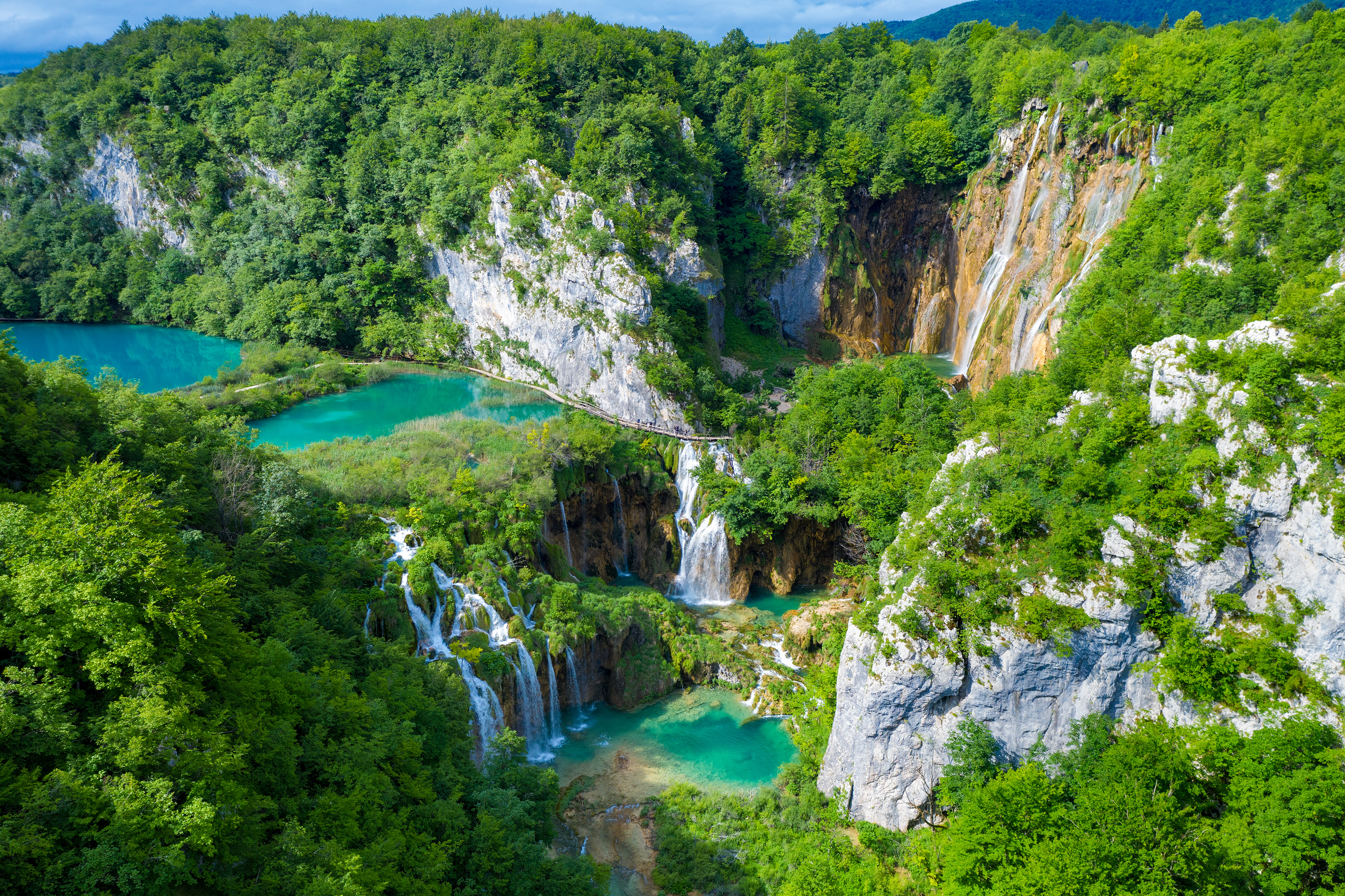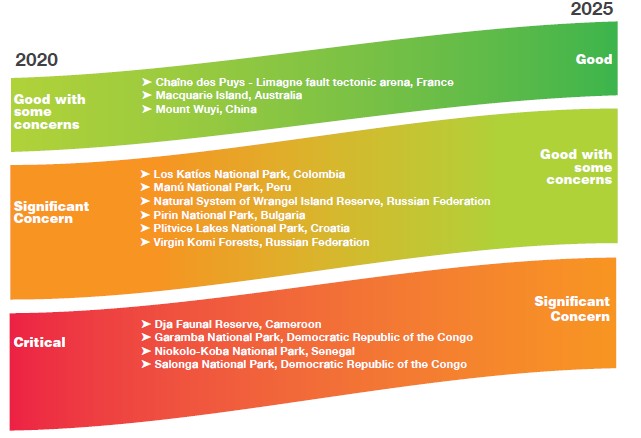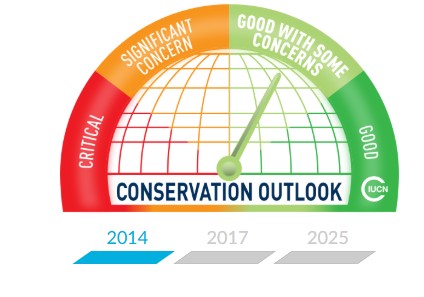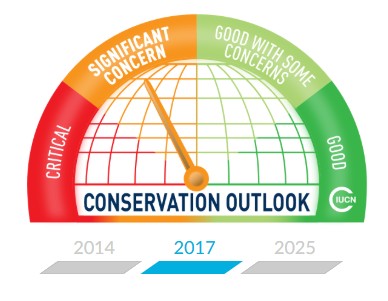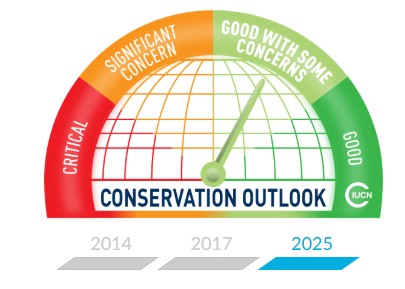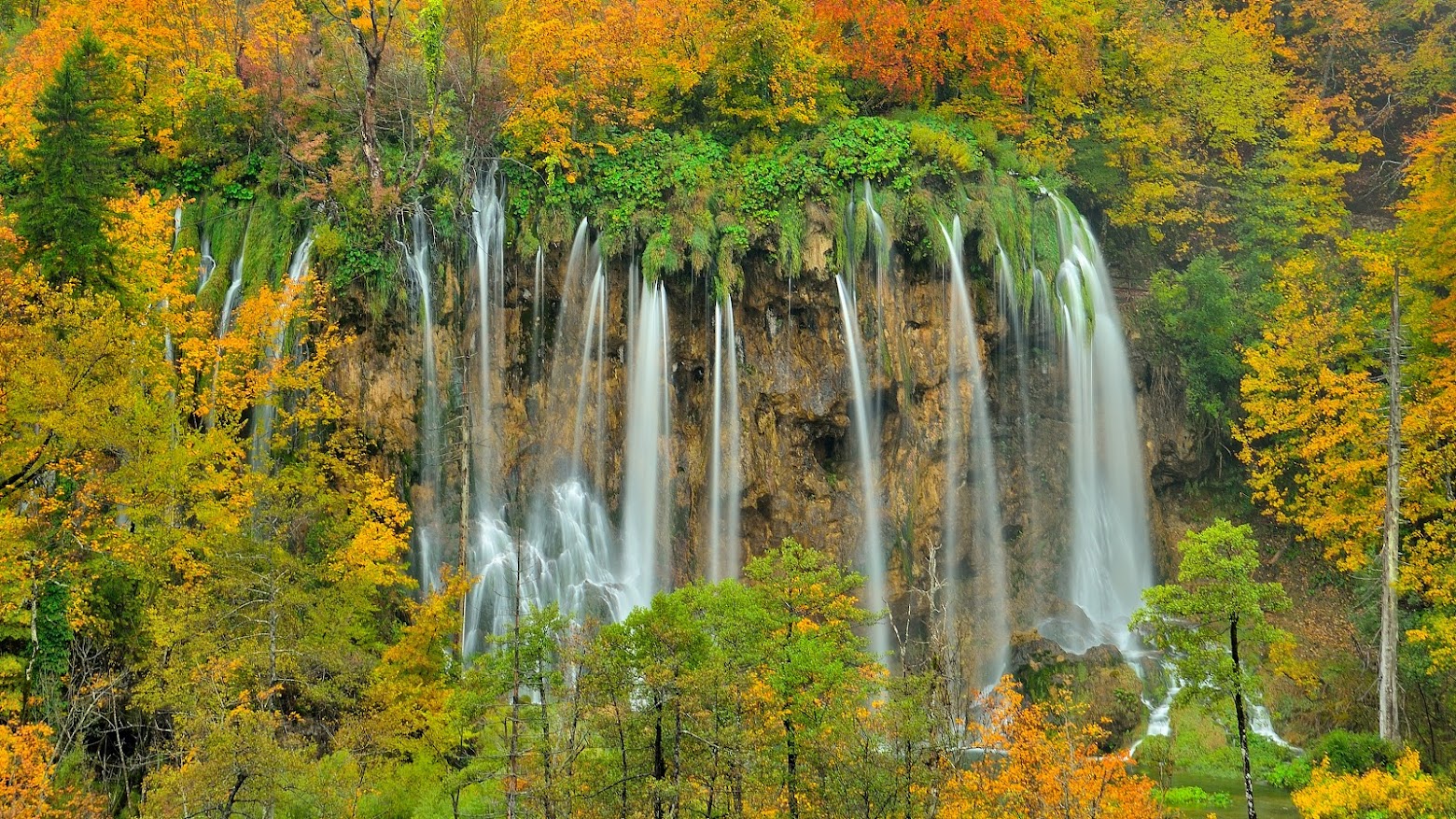In the latest reporting cycle for the global assessment of the conservation of World Natural Heritage sites conducted by IUCN through the IUCN World Heritage Outlook, Plitvice Lakes National Park has finally received a better outlook, improving from the category of “significant concern” to the category of “good with some concerns”!
Better outlook for Plitvice Lakes National Park (source: IUCN World Heritage Outlook 4, October 2025)
The last time we had this outlook was in 2014, but the numerous challenges we faced in the reporting period for 2017, when our outlook was rated as “significant concern”, up until the recently published IUCN World Heritage Outlook 4 in 2025, have meant that we are only now receiving the final confirmation of our higher rating for effective management and conservation.
Category changes of Plitvice Lakes National Park since 2014 (source: https://worldheritageoutlook.iucn.org/explore-sites/plitvice-lakes-national-park)
The categories (or ratings) are determined by the International Union for Conservation of Nature(IUCN), with four categories in total: critical, significant concern, good with some concerns and good. Reports on the state of the world heritage conservation have been published every 3 years since 2014. However, the last report was published after a period of 5 years, in October 2025.
The state of conservation assessment summary highlights the fact that the values of Plitvice Lakes National Park have so far been well preserved, despite the threats which have been putting the sensitive environment under pressure for decades. The water quality is good and stable, as shown by long-term monitoring conduced by the National Park. The good quality of water also contributes to continuous formation of tufa barriers, an outstanding universal value described by the World Natural Heritage selection criteria (vii), (viii) and (ix). Specific measures have been implemented since 2017, including the control of tourist facilities and inspection, later followed by the installation of water treatment devices, research on moving water intake structures outside of the Park boundaries and the start of the Spatial plan amendment procedure. In order to alleviate the pressure generated by visitors, we have invested in infrastructure, limited the number of visitors and enabled online ticket sales. Overall management of the area has been assessed as mostly effective with well-defined zoning, investments in scientific research and monitoring and the establishment of communication and interaction with the local community. Challenges and threats still exist, but with the cooperation of all stakeholders and further positive developments in management and conservation, we will strive to mitigate them as much as possible in the coming years.
You can find more information at https://worldheritageoutlook.iucn.org/explore-sites/plitvice-lakes-national-park, and World Heritage Outlook 4 is available for download at https://portals.iucn.org/library/node/52596.

